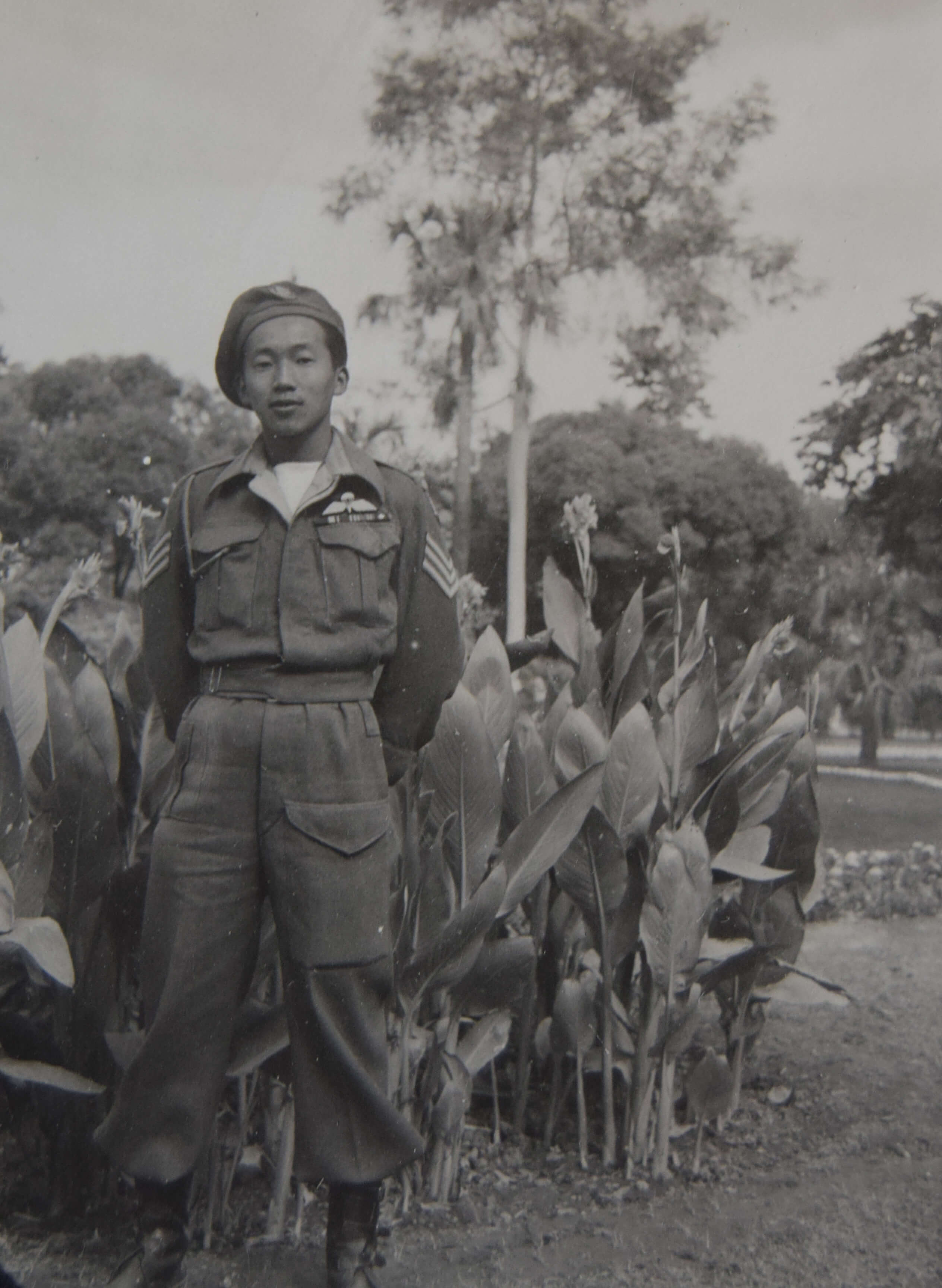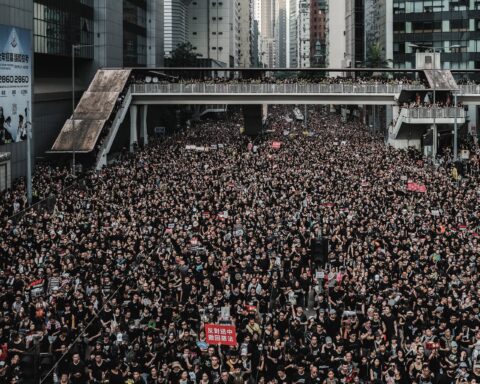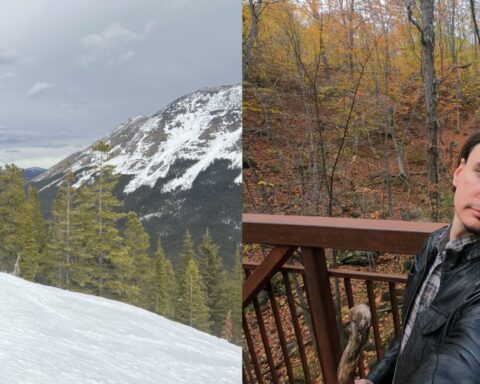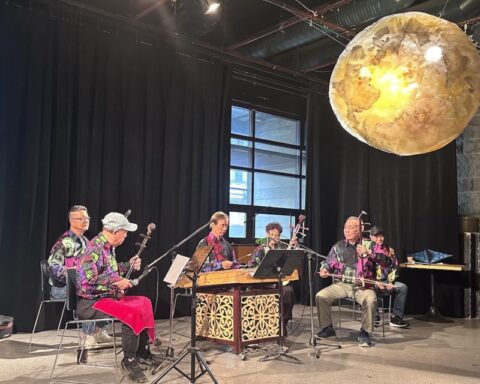 A new exhibit at a Vancouver museum is exploring the experiences of a lesser-known group of combatants in the Second World War, who were major contributors to Chinese-Canadian civil rights, according to experts.
A new exhibit at a Vancouver museum is exploring the experiences of a lesser-known group of combatants in the Second World War, who were major contributors to Chinese-Canadian civil rights, according to experts.
The Chinese Canadian Military Museum’s “Rumble in the Jungle” exhibit looks at Force 136, a team of Chinese-Canadians trained by British forces to practice guerrilla tactics in Southeast Asia.
Borrowing tactics from the French resistance to Nazi occupation during the Second World War, the team fought against the Japanese advancements in the area,
Local historian and lecturer Judy Lam Maxwell, who wrote her master’s thesis on Chinese-Canadian war veterans, conducts tours of historic spots in Vancouver’s Chinatown. She said the reason for using Chinese-Canadians as guerrilla fighters in the region was largely due to appearance and language barriers faced by Caucasian Allied soldiers.
“They were British subjects and they were going into territories that were colonized by the British, but all through Southeast Asia is a sprinkling of Chinese,” she says. “That gave them power that they visually fit the part, whereas here, being in society here, they stood out.”
Launching the exhibit
The museum’s curator, Catherine Clement, says the exhibit’s launch in May was the biggest the museum had ever seen; in attendance were nine living veterans of Force 136.
Cynthia Fung-Sunter attended the launch with her three sisters and her two sons. Her father, Henry Fung, was the among the first group sent into the war with Force 136. She says she has had to piece together her father’s experience through external sources.
The reason for using Chinese-Canadians as guerrilla fighters in the region was largely due to appearance and language barriers.

“I did ask, clearly, at different points, and he just would not give details,” she recalls, noting that the silence on the subject may have been due to post-traumatic stress disorder.
“She did a fine job,” says Fung-Sunter, commenting on Clement’s work in the exhibit. “I honestly feel that Force 136 became alive in that exhibit.”
Force 136’s impact on civil rights
Clement says the impacts of Force 136 extend much further than the context of the war; its existence acted much like a civil rights movement in its own way.
“A lot of the [Chinese-Canadian men] who served in the war were actually not considered Canadian citizens,” says Clement, referring to the denial of citizenship to Chinese Canadians, including those born in Canada, under the Chinese Immigration Act of 1923.
“It denied [them] the right to vote,” she says. “It means that even if you obtain a university degree, you cannot practice medicine or law, engineering, accounting — any of the really important professions.”
According to Lam Maxwell, after the war, many countries looked introspectively at their own racially driven policies.
Its existence acted much like a civil rights movement in its own way.
“There was also the realization that all these countries were racist in their own way,” said Lam Maxwell, pointing to segregation in America and Canadian treatment of the Chinese community. “They were fighting for rights on many different levels.”
Clement notes that it was the contribution of Chinese-Canadians to the war efforts that gained the community a great deal of popular support for civil rights.
“The war ended in ‘45, and two years after, Chinese are finally granted the right to full citizenship,” says Clement. “A lot of it had to do with their service in the war.”
In that same year, 1947, the Chinese Immigration Act was repealed. Ten years later, former Force 136 member Douglas Jung was the first Chinese-Canadian voted into parliament as the representative of Vancouver Centre.
The importance of remembering
Due to Force 136’s clandestine nature, Clement says it was difficult to garner information about the group.
It took about five months of full-time work to put the exhibit together, during which time she interviewed soldiers’ children like Fung-Sunter, whose knowledge of their fathers’ experiences was often fragmented.
Clement said she was interested in doing the exhibit on Force 136 now because there had never been one dedicated to the group and because of the shrinking number of living Chinese-Canadian Second World War veterans.
“There was this one last window of opportunity to do something to celebrate what they did while they were still alive,” she states. “And it’s an excuse to ask them more questions about what that experience was like.”
“The war ended in ‘45, and two years after, Chinese are finally granted the right to full citizenship.”
For Clement, there are lessons that today’s Canadians can learn from the history of the Chinese involvement in Force 136.
“For Chinese people, it’s understanding history,” she says. “How did we get here? This is not by accident; this is by things that people did for us, of [whom] there are still a few [. . .] around.”
Regarding Canadians as a whole, Clement says the lessons come back to the issue of immigration, which has come up in recent years in Vancouver.
“What do we learn from that? It’s that [. . .] making people feel different and isolated actually works against us as a community,” she concludes.
“Rumble in the Jungle” will be featured at the Chinese Canadian Military Museum in Vancouver’s Chinatown until fall of 2016.




